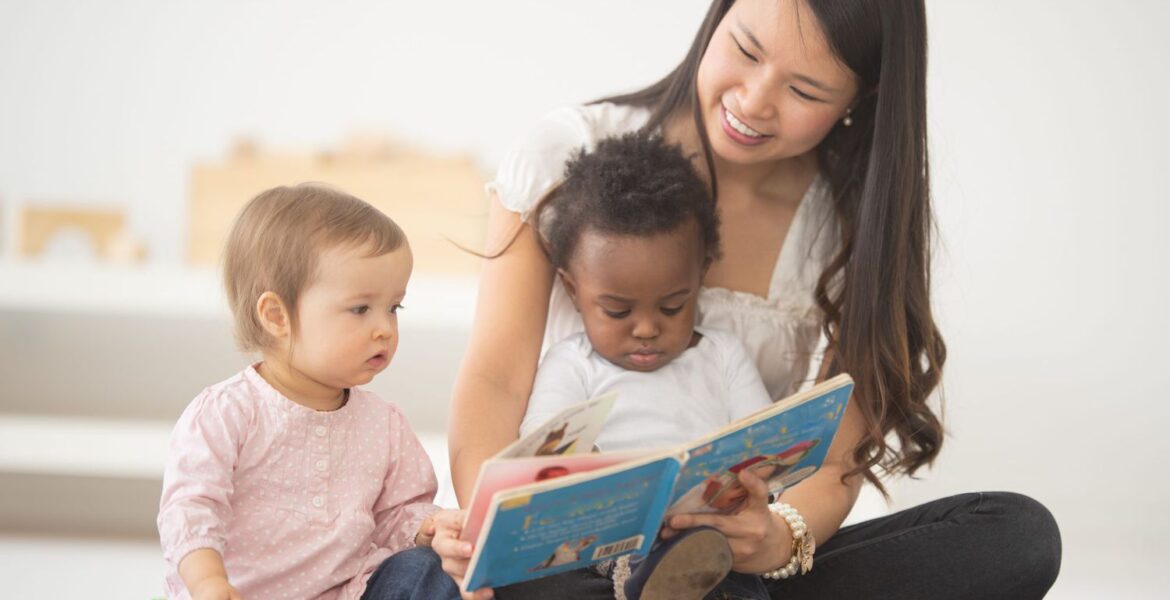A Comprehensive Guide to Infant and Child Sleep Training: Methods, Controversies, and Best Practices
August 29, 2024 2024-10-31 17:36A Comprehensive Guide to Infant and Child Sleep Training: Methods, Controversies, and Best Practices

A Comprehensive Guide to Infant and Child Sleep Training: Methods, Controversies, and Best Practices
Sleep is crucial for the healthy development of infants and children, but establishing consistent sleep patterns can be one of the most challenging aspects of parenting. Sleep training is a popular approach that many parents use to help their children develop healthy sleep habits. However, it’s also a topic that can be fraught with controversy, particularly when it comes to specific methods and the impact on a child’s emotional well-being. This article provides a comprehensive overview of infant and child sleep training, discussing the most common methods, addressing the controversies surrounding them, and offering best practices to help parents and caregivers navigate this important aspect of childcare.
1. Understanding the Basics of Sleep Training
What Is Sleep Training?
Sleep training refers to the process of helping a baby or young child learn to fall asleep and stay asleep independently. The goal is to establish a consistent sleep routine that allows the child to get the rest they need, which is essential for their physical and cognitive development. Sleep training typically begins between the ages of four and six months, as this is when babies start to develop the ability to self-soothe and are no longer as dependent on nighttime feedings. However, the exact timing can vary depending on the child’s development and the parents’ preferences.
Why Is Sleep Training Important?
Adequate sleep is vital for children’s growth and development. It supports brain development, emotional regulation, and overall health. For parents, successful sleep training can lead to improved sleep quality and reduced stress, making it easier to manage the demands of parenting. Sleep training can also help prevent sleep problems later in childhood, such as difficulties falling asleep, frequent night wakings, or bedtime resistance. By establishing healthy sleep habits early on, parents can help their children enjoy more restful and restorative sleep throughout their lives.
2. Common Sleep Training Methods
There are several sleep training methods, each with its own approach to helping children learn to sleep independently. The most common methods include the Ferber Method, the Cry It Out (CIO) method, the No Tears method, and the Chair method. Each of these methods has its own proponents and detractors, and it’s important to choose an approach that aligns with your parenting philosophy and your child’s temperament.
1. The Ferber Method (Graduated Extinction)
The Ferber Method, also known as “graduated extinction,” involves gradually teaching a baby to self-soothe and fall asleep on their own. This method was developed by Dr. Richard Ferber, a pediatric sleep expert.
How It Works:
- Bedtime Routine: Parents establish a consistent bedtime routine and put the baby to bed while they are still awake.
- Intervals: If the baby cries, parents wait for increasing intervals of time before going in to comfort them. The intervals typically start at a few minutes and gradually increase.
- Minimal Interaction: When comforting the baby, parents should keep interactions brief and avoid picking up the baby. The goal is to reassure the child while encouraging them to fall asleep independently.
Controversy:
The Ferber Method is sometimes criticized because it involves allowing the baby to cry for short periods. Critics argue that this can be stressful for both the baby and the parents and may lead to attachment issues. However, many pediatricians and sleep experts support the method, stating that it is a gentle and effective way to teach self-soothing skills without prolonged crying.
2. Cry It Out (CIO) Method (Extinction)
The Cry It Out (CIO) method, also known as “extinction,” is a more direct approach to sleep training. It involves putting the baby to bed and allowing them to cry until they fall asleep without parental intervention.
How It Works:
- Direct Approach: After a consistent bedtime routine, the baby is placed in their crib while awake, and parents leave the room. The baby is allowed to cry without being picked up or comforted.
- No Check-Ins: Unlike the Ferber Method, parents do not check in on the baby during crying episodes. The idea is that the baby will eventually learn to fall asleep on their own without relying on parental intervention.
Controversy:
The CIO method is one of the most controversial sleep training approaches. Critics argue that leaving a baby to cry without comfort can be distressing for the child and may have negative effects on their emotional development. However, proponents of the method argue that it can be highly effective and that babies typically learn to fall asleep on their own after just a few nights of crying.
3. The No Tears Method
The No Tears method, as the name suggests, aims to minimize or eliminate crying during the sleep training process. This method focuses on gentle techniques to help the baby learn to sleep independently without the distress associated with crying.
How It Works:
- Comforting to Sleep: Parents use techniques such as rocking, nursing, or patting to help the baby fall asleep. Over time, these interventions are gradually reduced to encourage independent sleep.
- Responsive Parenting: The method emphasizes responding to the baby’s needs and cues, ensuring that they feel secure and supported throughout the process.
Controversy:
While the No Tears method is often preferred by parents who are uncomfortable with letting their baby cry, it can be a slower process compared to other methods. Some critics argue that this approach can prolong sleep training and that babies may continue to rely on parental assistance to fall asleep.
4. The Chair Method
The Chair method is a middle-ground approach between the Ferber Method and the No Tears method. It involves gradually reducing parental presence in the room as the baby learns to fall asleep independently.
How It Works:
- Chair Placement: Parents start by sitting in a chair next to the baby’s crib until they fall asleep. Each night, the chair is moved farther away from the crib until it is eventually outside the room.
- Gradual Withdrawal: The idea is that the baby will become accustomed to falling asleep without direct physical contact, eventually sleeping independently without parental presence.
Controversy:
The Chair method is generally seen as a gentle approach, but some parents find it challenging to implement, especially if the baby is very attached to their presence. Additionally, the method can be time-consuming, as it requires a gradual withdrawal over several weeks.
3. Addressing Controversies in Sleep Training
Emotional Impact on the Child
One of the most significant controversies surrounding sleep training is the potential emotional impact on the child. Critics of methods like CIO and Ferber argue that allowing a baby to cry can lead to increased stress levels, feelings of abandonment, and negative effects on attachment and emotional development. However, many pediatricians and sleep experts counter these claims by emphasizing the importance of context. They argue that when sleep training is done with consistency, love, and reassurance during the day, it is unlikely to harm the child’s emotional well-being. They also point out that sleep training methods like the Ferber Method are designed to be time-limited and should not result in prolonged distress.
Impact on Parental Bonding
Another concern is that sleep training could negatively affect the bond between parent and child. Critics worry that if a child is left to cry or if the parent is less responsive during the night, it could weaken the parent-child bond. Proponents of sleep training argue that a well-rested parent is better able to provide quality care and emotional support during the day. They also note that sleep training, when done correctly, can lead to better sleep for both the child and the parents, which can strengthen family relationships overall.
Cultural Perspectives on Sleep Training
Cultural attitudes towards sleep training can vary significantly. In some cultures, co-sleeping (where the child sleeps in the same bed as the parents) is the norm, and the idea of sleep training may be viewed as unnecessary or even harmful. In other cultures, independent sleep is highly valued, and sleep training is seen as a necessary step towards fostering independence. Parents and caregivers should consider their cultural values and beliefs when deciding on a sleep training approach. It’s important to choose a method that aligns with your family’s values and that you feel comfortable implementing.
4. Best Practices for Sleep Training
Regardless of the method chosen, there are several best practices that can help ensure a successful sleep training experience:
1. Establish a Consistent Bedtime Routine
A consistent bedtime routine is crucial for signaling to your child that it’s time to sleep. This routine might include activities like a warm bath, reading a book, or singing a lullaby. The routine should be calming and predictable, helping the child transition from wakefulness to sleep.
2. Create a Sleep-Friendly Environment
The child’s sleep environment plays a significant role in the success of sleep training. The room should be dark, quiet, and cool, with a comfortable crib or bed. White noise machines or blackout curtains can help create an ideal sleep environment.
3. Be Patient and Consistent
Sleep training requires patience and consistency. It’s important to stick with the chosen method for at least a few weeks to see results. Inconsistent implementation can confuse the child and prolong the process.
4. Respond to Your Child’s Needs
Even during sleep training, it’s essential to remain attuned to your child’s needs. If your child is sick, teething, or going through a developmental leap, it may be necessary to adjust your approach temporarily. The key is to balance teaching independence with providing comfort and support.
5. Involve Both Parents
If possible, both parents should be involved in the sleep training process. This ensures consistency and allows both parents to support each other during the challenging moments of sleep training.
5. When to Seek Professional Help
Sleep training can be challenging, and some families may find that they need additional support. If sleep problems persist despite consistent efforts, or if sleep training is causing significant stress for the family, it may be helpful to seek advice from a pediatrician or a certified sleep
consultant. These professionals can offer personalized guidance and help address any underlying issues that may be affecting your child’s sleep.
Conclusion
Sleep training is a deeply personal decision that can vary widely depending on the child’s temperament, the parents’ philosophy, and the family’s cultural background. While some methods of sleep training, like the Cry It Out method, are controversial, there is no one-size-fits-all approach. The most important factor is choosing a method that works for your family and aligns with your values. By understanding the different sleep training methods, being aware of the controversies, and following best practices, parents and caregivers can help their children develop healthy sleep habits that contribute to their overall well-being. With patience, consistency, and a focus on the child’s needs, sleep training can be a positive experience that leads to better sleep for the entire family.






